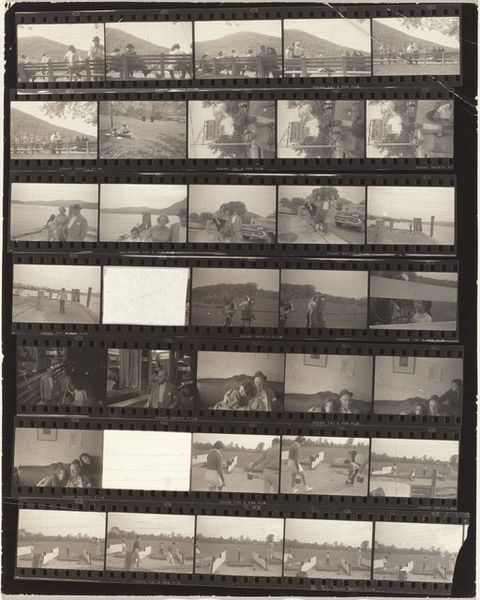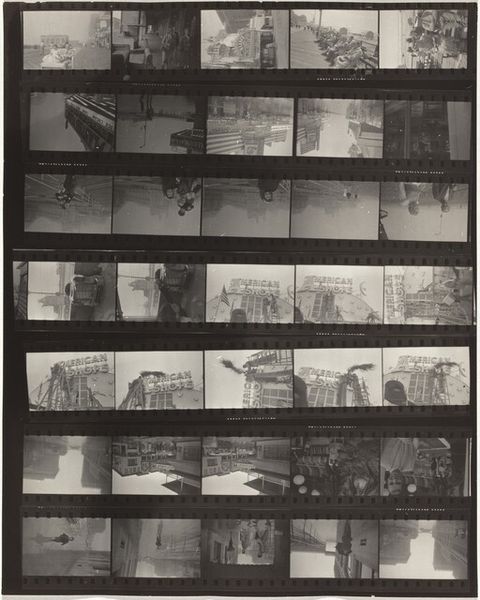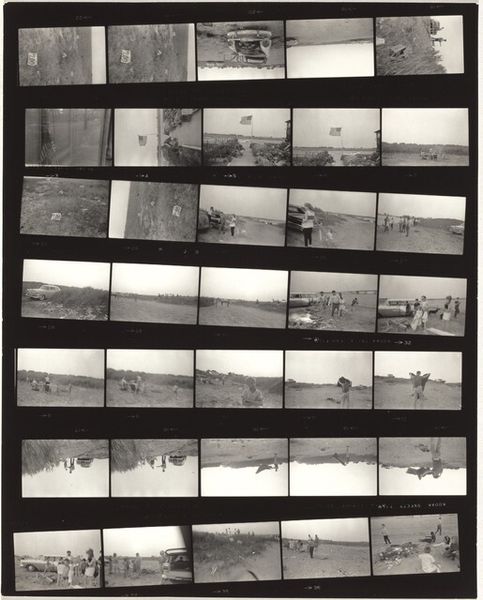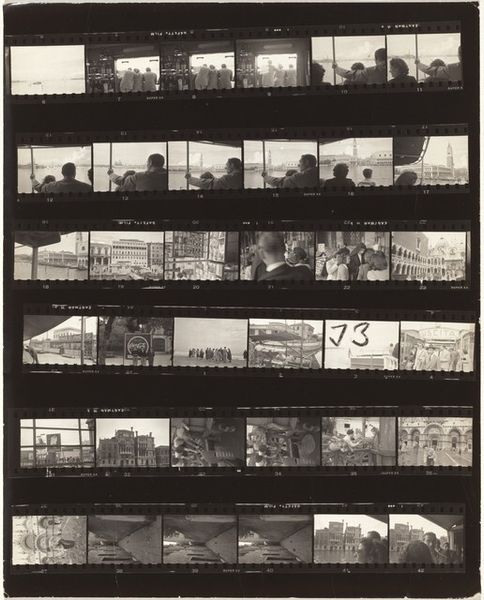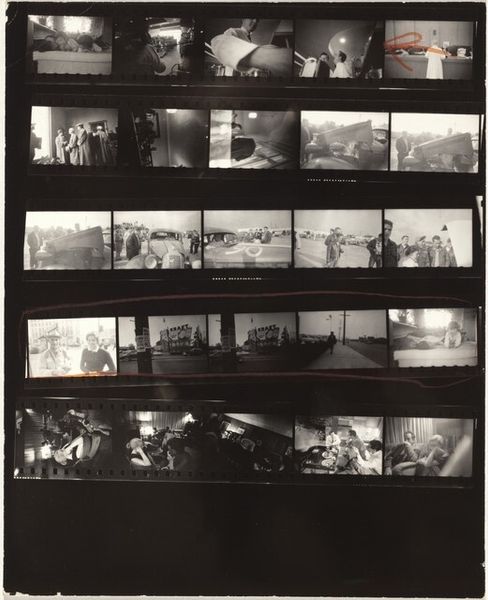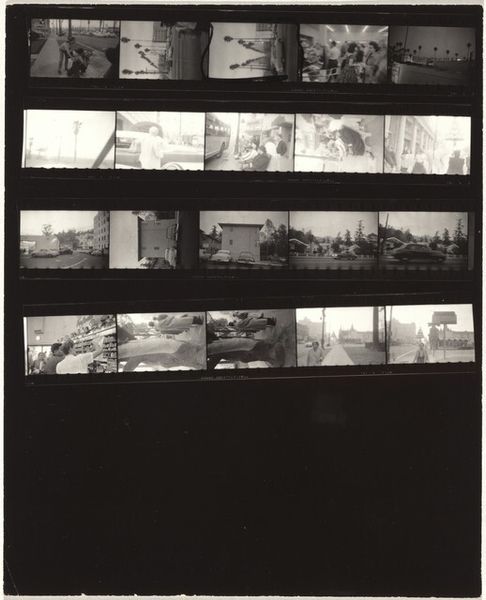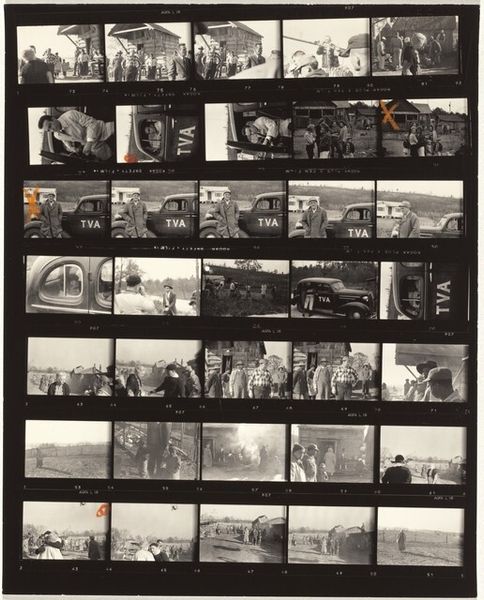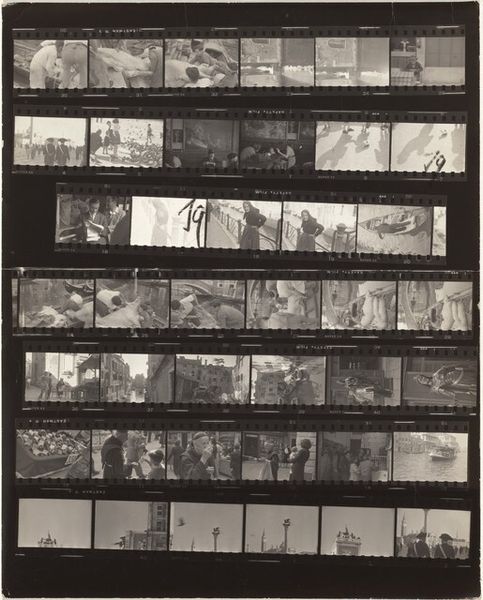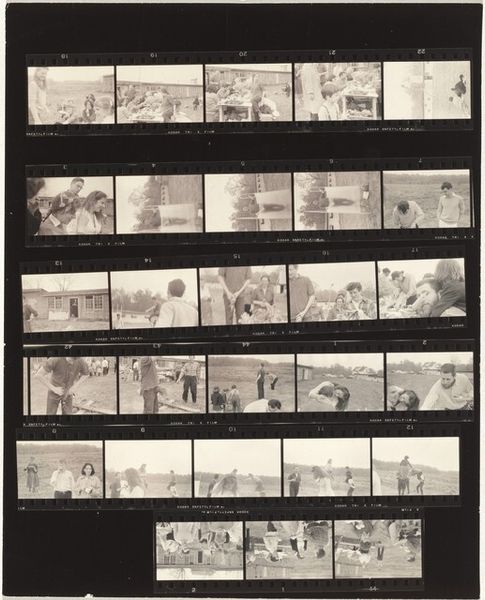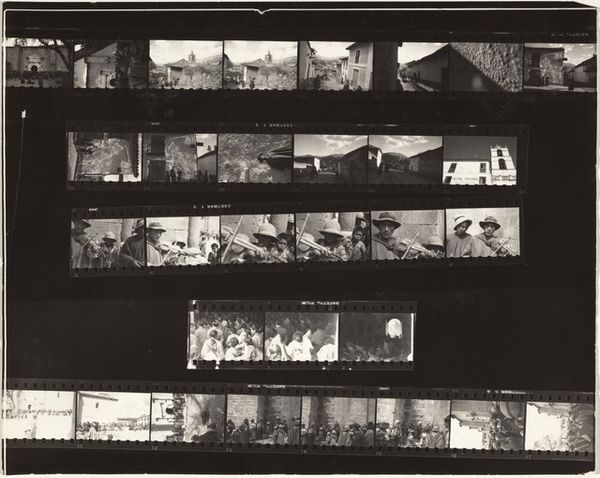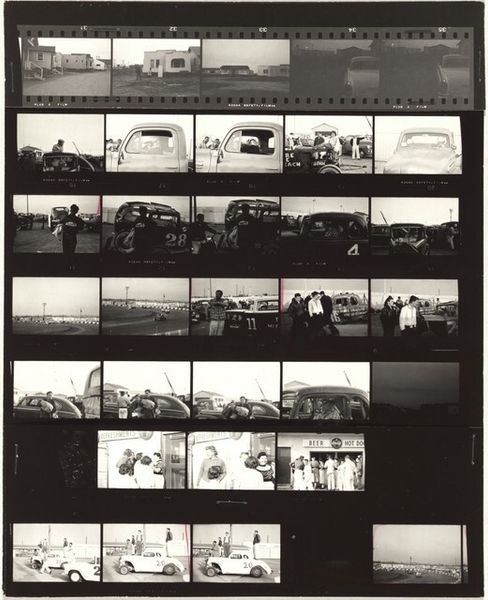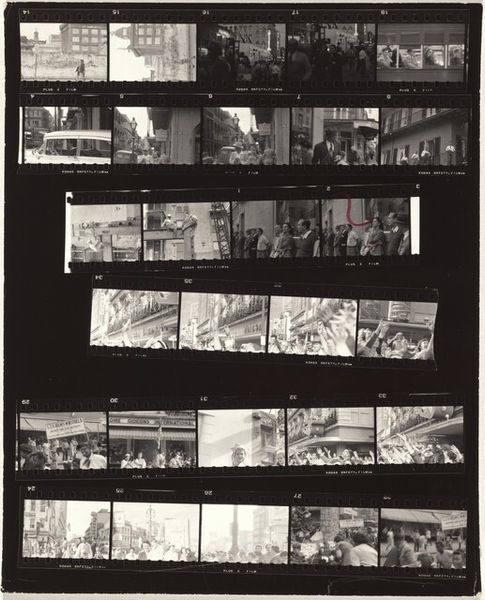
Dimensions: sheet: 25.2 x 20.4 cm (9 15/16 x 8 1/16 in.)
Copyright: National Gallery of Art: CC0 1.0
Curator: Robert Frank’s contact sheet for "Allan Kaprow's party 3," made in 1957, offers a behind-the-scenes view of a burgeoning art form. The grid-like structure of the contact print displays multiple exposures, giving us a fragmented narrative of the performance. Editor: It feels like peeking through a window into a bygone era. The stark contrast and graininess create a mood of nostalgic voyeurism. There's also something frantic about the sequence, a feeling that a story is trying to break free. Curator: Note how the composition favors dynamism over stability. The multiple frames prevent a single, dominant image, fracturing our attention and replicating, I think, the sense of disorientation Kaprow aimed to create within the 'Happening' itself. The frame, its structure, almost a structuralist poem. Editor: These "Happenings"—the cultural baggage is incredible! This contact sheet captures the nascent spirit of challenging conventions, and you see a shift from passive observation to active engagement that marks the era. Each image acts as an incomplete symbolic marker pointing toward participation, a dissolution of the boundary between art and life, of stage and audience. Curator: Exactly. Frank's photographic choices highlight the participatory and ephemeral nature of Kaprow's work. There is little focus, a kind of casual grab for something undefinable and that refusal to allow a clear stable form feels true. I wonder what meaning we can derive from its photographic residue? Editor: Maybe it underscores how difficult it is to fix something spontaneous within a still photograph? Maybe we're meant to find the meaning precisely in what escapes the photograph itself? Look at those small blank 'screens' on which figures draw and perform -- do these speak to painting's own confrontation with meaning? This is not just about capturing the event, but about questioning representation itself! Curator: Perhaps. In this photograph, one appreciates Frank's refusal to aestheticize; it mirrors the 'Happening's' own rejection of formalism, and it shows us more than something merely to be 'seen.' Editor: Absolutely, this piece resonates as an important document—the prefiguration of an attitude toward art. We see not just the performance, but hints about its wider societal resonance too. The spirit, beautifully framed, or unframed.
Comments
No comments
Be the first to comment and join the conversation on the ultimate creative platform.
